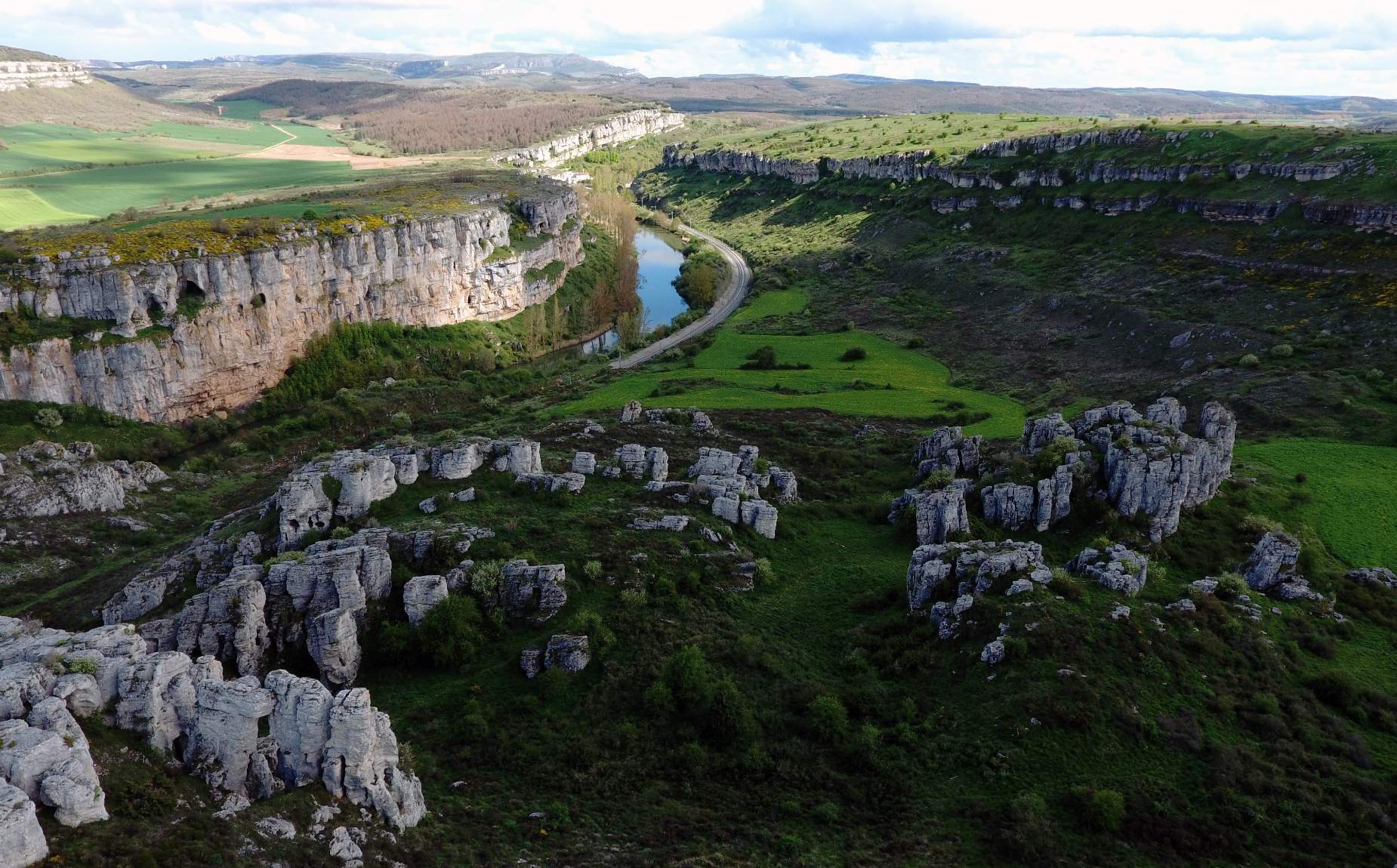Las Loras Geopark
The link between geological heritage, art and human settlement
Located in the southeastern sector of the Cantabrian Mountains, it has a powerful landscape.
Las Loras Geopark, located in the southeastern sector of the Cantabrian Mountains, has a powerful landscape that tells us about some of the great geological events that took place during the last 250 million years.These enormous limestone moors of more than 1000 m altitude that are Las Loras, and that rise like impregnable fortresses, are flanked by deep and beautiful river canyons sculpted by the rivers Ebro, Pisuerga or RudrónThe powerful landscape of Las Loras is witness to the largest concentration of Romanesque buildings in the Iberian Peninsula. The link between geological heritage, art and human settlement is one of the hallmarks of the Geopark.
Exceptional landscapes with waterfalls and natural monuments coexist in extraordinary harmony with churches, villages, convents and Romanesque monasteries, in such a way that it seems impossible for one to exist without the other. Megalithic monuments, pre-Roman forts or amazing cave hermitages are dotted in every corner of the Geopark, coexisting with numerous villages that preserve their original traditional architecture and where it is still possible to perceive the essence of an authentic rural environment. Thus, the link between geological heritage, art and human settlement is one of the signs of identity of Las Loras Geopark.
Origen
Due to the strategic geographical location of the territory within Pangea, in each of the geological formations of the Geopark, the most important geological events that affected this region of Europe during the last 250 million years have been recorded. Thus, the opening of the Atlantic Ocean, the stages of rifting of the Bay of Biscay, or the great marine transgression of the Upper Cretaceous, can be observed in situ in magnificent outcrops.
Natural Heritage
The diversity of the natural environment and its good state of conservation allow the maintenance of a remarkable representation of habitats, some of them very unique and rare in Europe, which are home to many endangered species of flora and fauna. The abrupt relief and its strategic biogeographical position in the transition zone between the Euro-Siberian and Mediterranean regions, together with the outstanding presence of the characteristic high plateaus of the different Loras, are the determining factors of this variety, which has favored the designation of a total of 10 figures of environmental protection.
Cultural Heritage
The cultural heritage of the Geopark reminds us that we are facing the largest concentration of Romanesque buildings in Europe. Monasteries, churches or villages exceptionally well preserved, are scattered throughout the territory forming a network of small architectural treasures that transport us to medieval times. Other jewels are the cave hermitages or the exceptional concentration of megalithic monuments and pre-Roman forts that are scattered throughout each of the Loras. All this territory would not be what it is without the people who have inhabited it throughout its history. Despite the current sparse population, there are still many traditional festivals, dances and music that enrich even more if possible the incredible natural and cultural heritage of the Geopark Las Loras.





